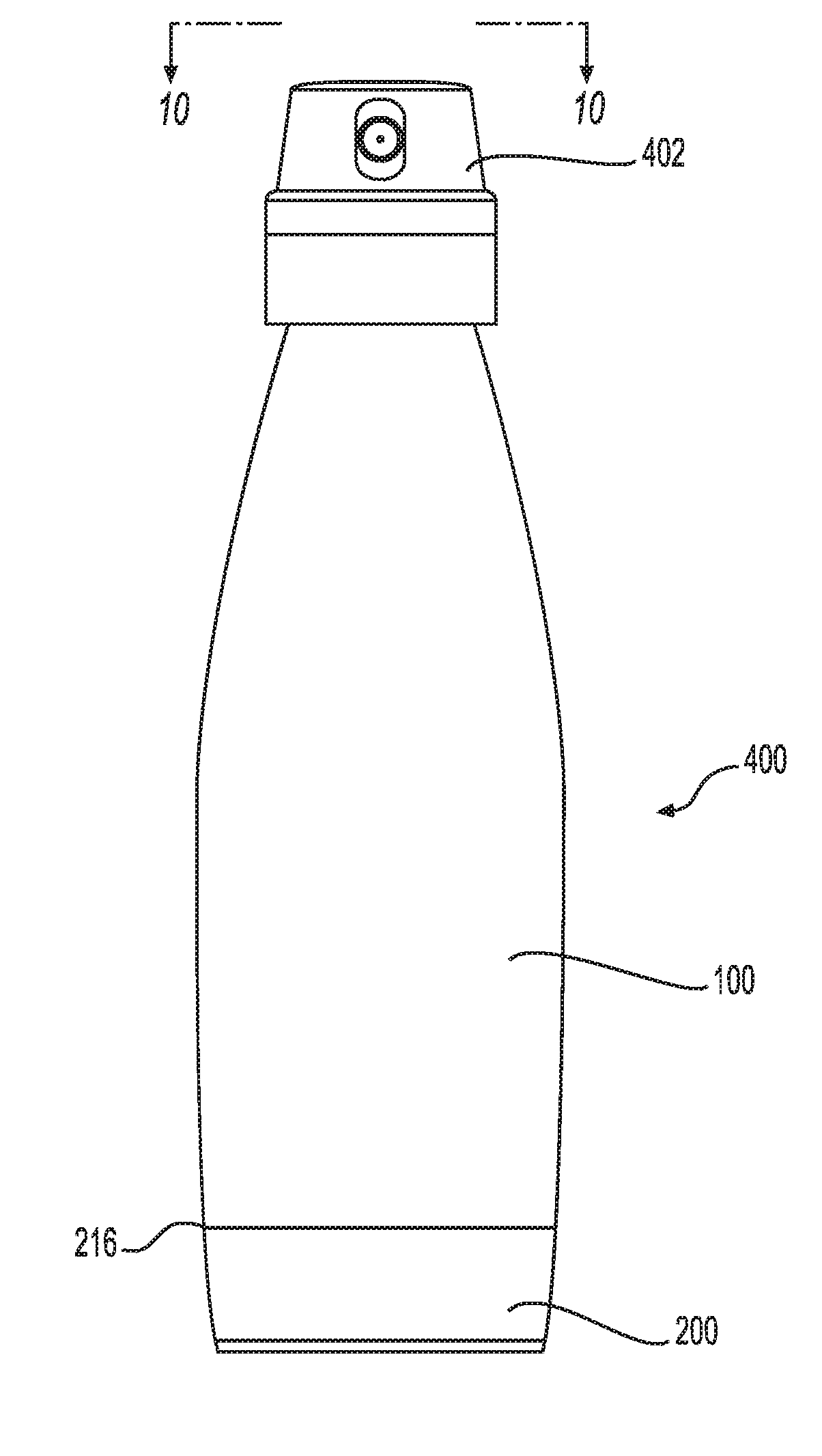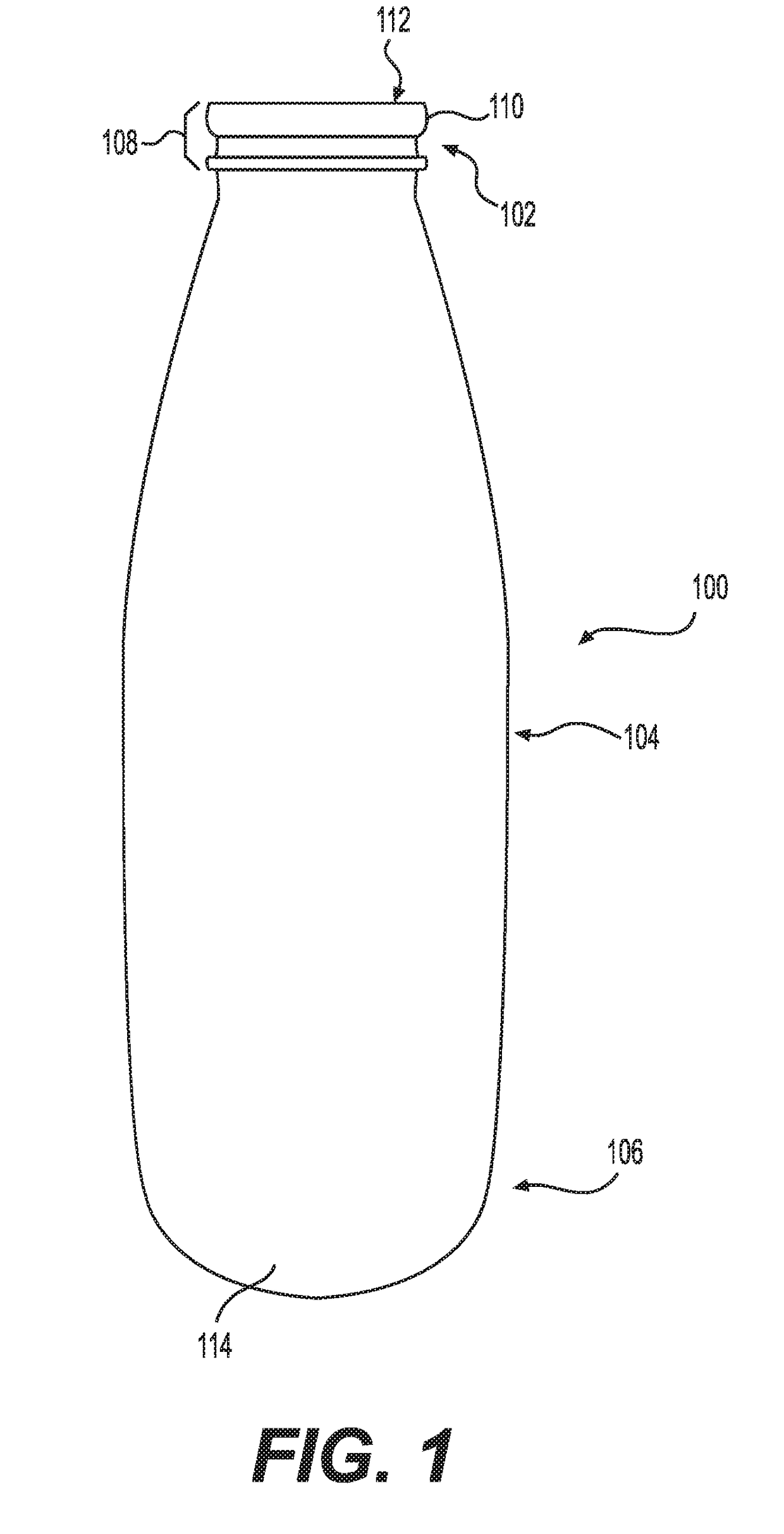Plastic bottle and base cup for a pressurized dispensing system
a technology of plastic bottles and pressurized dispensing, which is applied in the direction of liquid dispensing, packaging, supporting means, etc., can solve the problems of plastic aerosol bottles that could rupture, pressure inside plastic bottles can weaken the plastic structure, and the pressure inside plastic bottles can be difficult to control
- Summary
- Abstract
- Description
- Claims
- Application Information
AI Technical Summary
Benefits of technology
Problems solved by technology
Method used
Image
Examples
Embodiment Construction
[0022]Our invention generally relates to pressurized dispensing systems. More specifically, our invention relates to a dispensing system that includes a plastic bottle containing a product under pressure, with a base cup being attached to the plastic bottle to allow the system to stand upright.
[0023]In the descriptions that follow, we will sometimes explain features of our invention in the specific context of an aerosol dispensing system. Those skilled in the art will readily appreciate, however, that our invention is not limited to use with aerosol products. Rather, the pressurized dispensing systems described herein could alternatively be used in conjunction with products other than aerosols. For example, the dispensing systems described herein might be used to dispense foam products such as shaving cream or soap, or used to dispense food products such as soda, whipped cream, or processed cheese.
[0024]FIG. 1 is a side view of a plastic bottle 100 for use in a pressurized dispensin...
PUM
 Login to View More
Login to View More Abstract
Description
Claims
Application Information
 Login to View More
Login to View More - R&D
- Intellectual Property
- Life Sciences
- Materials
- Tech Scout
- Unparalleled Data Quality
- Higher Quality Content
- 60% Fewer Hallucinations
Browse by: Latest US Patents, China's latest patents, Technical Efficacy Thesaurus, Application Domain, Technology Topic, Popular Technical Reports.
© 2025 PatSnap. All rights reserved.Legal|Privacy policy|Modern Slavery Act Transparency Statement|Sitemap|About US| Contact US: help@patsnap.com



